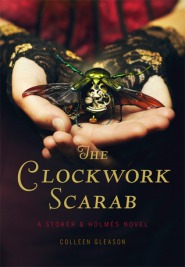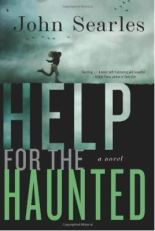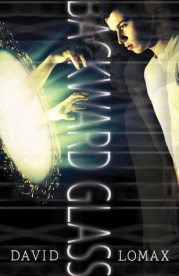After a wonderful time at ALA MW, during which I was lucky enough to meet many of the awesome librarians I follow on Twitter, I came back to a fair clusterfuck in my final semester of grad school. All that good feeling and fuzzy happy conference feels that I’d gathered over the last few days were replaced my a desire to slam my head repeatedly against my desk in frustration. At which point I started talking to my cat.
And that was when I realized what the problem was.
My MLIS is my second graduate program. I did a MA in English Literature at UNCG back in 2006-2008. All my courses were night classes since I was teaching full-time. So my day was often, teach all day, grade papers, pick up a sandwich, eat said sandwich while circling for a parking space, go to class, go the library, go home. Rinse. Repeat. It was stressful and busy and often made me want to pull my hair out.
One of my classes was super small; there were just four of us and the professor. The professor was a guy who wasn’t always super with it. Sometimes kind of an ass to be honest. He would say these really ridiculous things sometimes and we would all give each other side eye like “Did he really just? What? What is happening?” We never really talked about it outside of class but it was nice to have that eye contact and know that it wasn’t just me.
In another one of my classes, we all signed up for rotating snacks. That way, every week we got a nice little snack and chat break in the middle of class. We’d all stand around and make jokes about those soft sugar cookies that must have drugs in them because they really aren’t that great but YOU CAN NEVER STOP EATING THEM.
It’s amazing the kind of community you can build through body language and sugar cookies. It was a sense of knowing you were never really alone. There was always someone who would understand why you had the “WTF?” look on your face or who was around to have long, ridiculous conversations about that one time that guy asked your prof if the pearl in the Shakespeare sonnet was a metaphor for a clitoris and we all almost cried we laughed so hard. And those are the things that matter because those are the things that get you through. And that is exactly what is missing for me from an online program.
Online programs often struggle to offer their students a way to build community. Students are scattered across the nation with schedules that have no sense of normalcy whatsoever. There are discussion boards and student forums but my experience with those has been largely negative. Oftentimes if someone posts an issue or a concern it turns into a huge argument with people being rude and abusive. It became even worse once students could post anonymously. Christ on a cracker, you’d think a bunch of a adults in a graduate program would know how to be kind to one another but apparently not. So then no one wants to post anything that might invite abuse or mockery. On top of that, you have students who will tell professors if a student says anything about them on the board. So now we have abuse and snitching. Not exactly an environment conducive to building supportive relationships. Not everyone does this. Some people are wonderful and kind and do their best to be supportive and helpful but we all know how much more likely people are to be impacted by the negative than the positive.
So what are online students to do? Oftentimes we’re at points in our lives where most of our family are friends aren’t in school, so while they may be sympathetic it can be hard for them to fully relate. Sometimes what you need is someone who is in the same position. Enter the Twitterverse.
Up until maybe 6 months ago, I wasn’t on Twitter much but a combination of people (I’m looking at you D) unknowingly motivated me to be on there more and I got hooked. Because see, here’s the thing a lot of people don’t know: There are a lot of really cool and nice library-world people on Twitter. There’s a whole bunch of other people on there too, some neat, some jerky. But I’m pretty sure we’re all pretty up-to-date on that fact.
So yeah, the Twitterverse and the Library World. So I start following some people. And I mostly just lurked at first. I, unsurprisingly, run my mouth about a few things, but I primarily lurk. And as I lurk I start to come across amazing things, like #libchat and #libtechgender and #librarylife. So I start to poke a two in, drop a comment here or there and this really odd thing started to happen where all of sudden I had followers. Like actual ones, not just friends who absentmindedly followed me because they’re my friends. And then it became not just dropping a comment here or there but having actual conversations with people. And I went, “Oh. Huh. I sort of belong here.” And it was wonderful.
I get a lot of grief some from of my friends about how much I love Twitter but Twitter filled a professional and programmatic community need for me that most of my friends aren’t looking for. They have fully fleshed out professional networks. They’re either not in school or they’re in an onsite program with other students. I am also significantly more of a socially awkward turtle than most of my friends. So to find this incredibly welcoming and kind community was a big deal for me. And then I went to ALA MW and would introduce myself to people as someone who followed them on Twitter and it was much less weird than I anticipated. Everyone was so nice and encouraging and polite. Because see, when you only have 140 characters it becomes hard to fake being a good or nice person. So those awesome people that you have found on Twitter are probably just as awesome in person.
So, long story short, Twitter provides a great opportunity for community, especially in the Library World. One of the things that comes up on Twitter sometimes is the fact that there are a lot of issues with MLIS programs the way they are now. People are very concerned about programs not being challenging or selective enough. Programs are turning out far too many graduates, especially online programs where it becomes easier to fill a class and expectations may not be quite as rigorous as in other programs. But I think another issue we need to worry about is how we can better build community amongst online students. Because I hate to break it to online programs, but that shit actually matters. My ability to communicate with my peers and form networks will translate into how well I can communicate with my professional peers and create a professional network. Which ultimately can have a huge impact on my future job potential as well as my future participation in my field as more than just a worker bee. And yes, in an ideal world all students would be naturally motivated and eager to reach out to their field, but let’s face it, it’s not an ideal world. Students need to learn how to network and it’s not a skill that’s typically covered anywhere in secondary or post-secondary curriculums. The professional world is a scary place and I think schools have a responsibility to help prepare their students for it so that it’s a little less scary.
Until then, I’m grateful for Twitter and the many Twitter-librarians who have helped me start to build my own community and have helped provide some encouragement to continue doing so. I’m doing my best to encourage others to give it a shot and to try and be more social at conferences. After all, every little bit helps and small steps here will hopefully lead to bigger and better things in the future.









